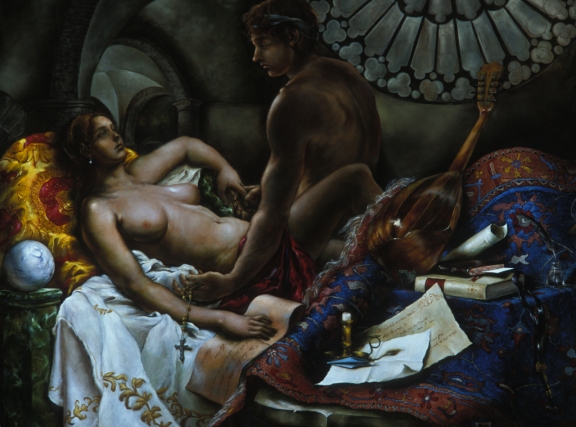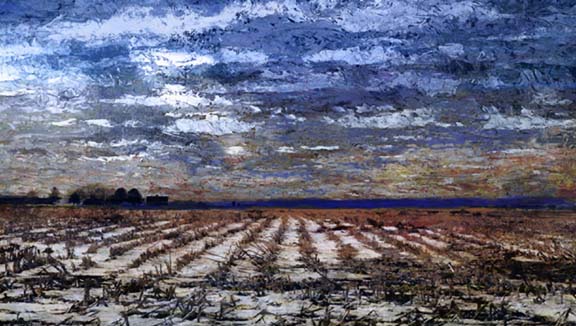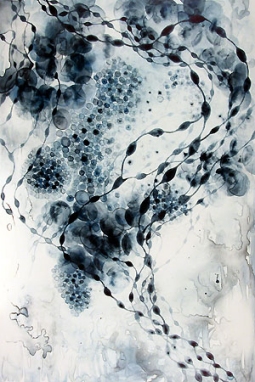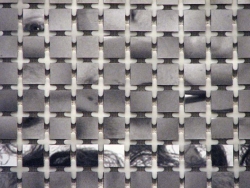EIU
Faculty Art Exhibition |
 |
|
Being asked to produce a video for Western Carolina University about their teacher training program in Jamaica gave me the chance to explore a documentary format. The travel to Jamaican classrooms was also a wonderful opportunity to observe another culture. My work included lots of interviews, candid shots of teachers at work, and many shots of Jamaican locations as cultural backdrop. My introduction to the video includes contrasts between rich and poor, coastal and inland places, fine art and everyday experience. I plan to compile other travel footage next summer in Kenya, and hope to produce an art video about cultural contrasts in the near future. |
 |
| Jenny
Chi Abélard was a well-respected 12th-century Parisian scholar and teacher. Heloise was educated in a convent before she came to Paris at about age 17 to live with her uncle, Fulbert, a canon of the church, and a financial benefactor for the construction of Notre Dame Cathedral. They first met when Abélard, smitten with Héloïse’s beauty and intellect, arranged with Fulbert to become her tutor as well as to reside in their home. Eventually, they were secretly married and had a child, but feeling betrayed, Héloïse’s uncle Fulbert caused the castration of Abélard. Abélard sought refuge in the monastic life and forced Heloise to become an abbess in a convent. Their correspondence documents the successes both achieved in their new careers as well as how they struggled with their feelings for one another. The letters powerfully articulate the wide range of emotions they experienced. Although this story was the subject of paintings in the past, I believe the image created by the contemporary artist could still resonate in today’s art world. However, I feel that the profundity of conflicting emotions is best expressed in a “post-modern” renewal of the highly specialized and intense oil painting techniques of academic painting, as it was practiced during the 15th through 18th centuries. For me, what is particularly intriguing about this subject is how it covers many areas of disciplines: philosophy, religion, literature, psychology, history, music and visual arts. The image depicts the celebration of their love; at the same time, it alludes to the doomed fate ahead by the use of rich symbolism. |
 |
||
|
Ann
Coddington
I am interested in formal similarities between our bodies and the world at large. Landscape 42 is a deconstruction of the human figure, reconfigured as a pseudo - landscape. Our bodies are a metaphoric landscape through which we navigate our lives. The experiences of our lives are mapped out in our bodies. We experience the world through our bodies and it, in turn, experiences us. To me, this piece resembles a view of the ocean while standing on the beach, with waves breaking in the distance.
|
 |
|
Cydnie
Simonet Cassalta In my oil paintings on panel I am exploring this relationship between two realities: a shiny, sparkling surface world and a dark and troubled world of fear. Young beautiful bodies vogue and pose in empty, acidic-colored spaces. Exposed skin takes on a cold, other worldly sheen wrapped in the latest designer fashions. Lurking behind the glitter, the desire for status motivates and defines the search for an advantageous mate. Viral entities, gas clouds and bubbling pink sores begin to roll in as if from a fog machine to obscure or engulf the figures in mid-come-on. This combined imagery forces a visual duality: the escapist pop culture youth can no longer hide from the horrors of reality. I use a technique of glazing in multi layers to create a luscious candy-colored sweetness in the surface of the works. This colorful sweetness entices participation by the viewer, making palpable the viral cloud menace as it influences the libidinous scene. With our attention being pulled in so many directions by media over saturation and the cult of celebrity, our society seems to turn its assessing eye further and further inward and away from the darkness of the world’s problems. Is this candy land we have created a beautiful barrage of harmless luxury, or will this insidious viral nature lead to our extinction? To
see more of my work, take a YouTube video tour of my site at the Packer
Gallery or visit my
website . |
 |
|
Cornfield To see more of my work, visit my online gallery. |
|
|

Images
courtesy of the artist and of Bruno David Gallery, St. Louis, MO
|
||
|
|||

